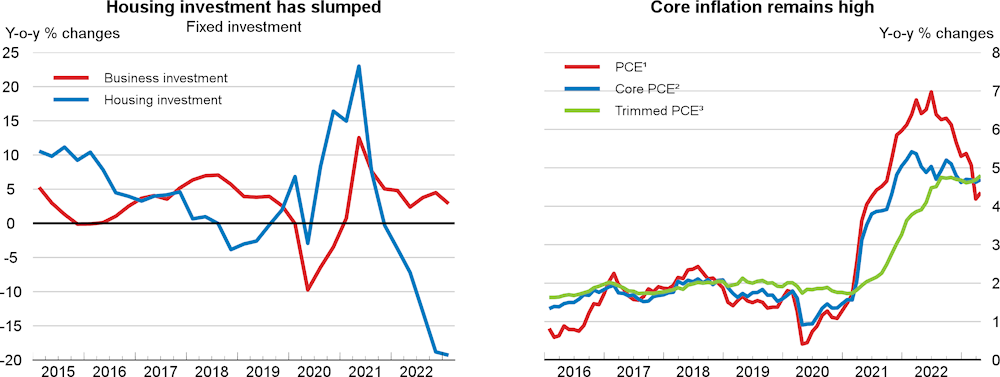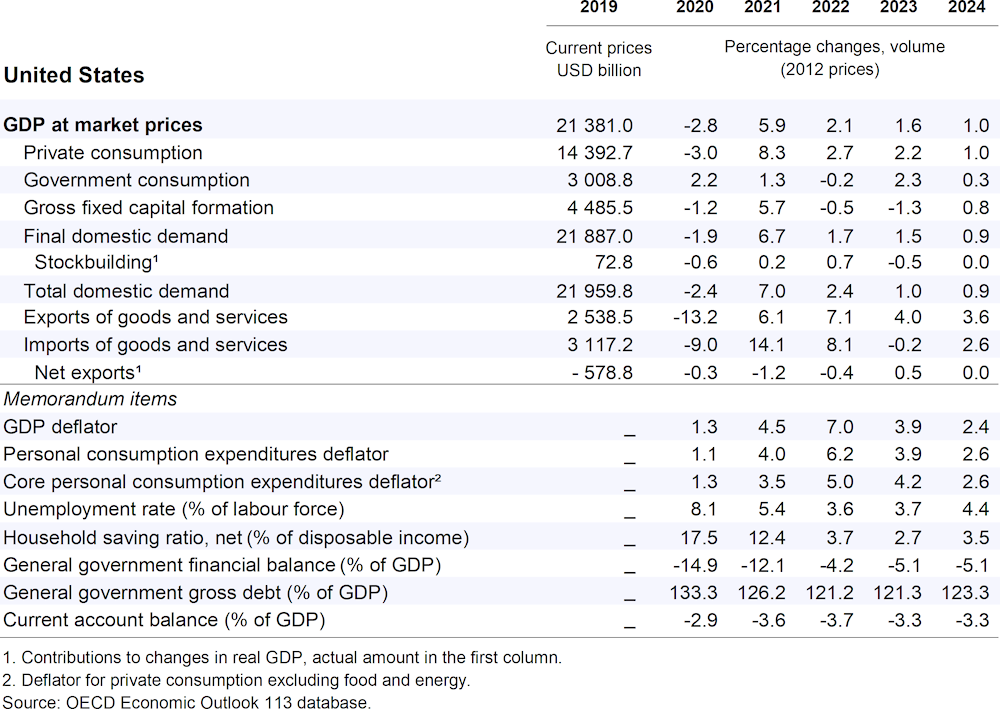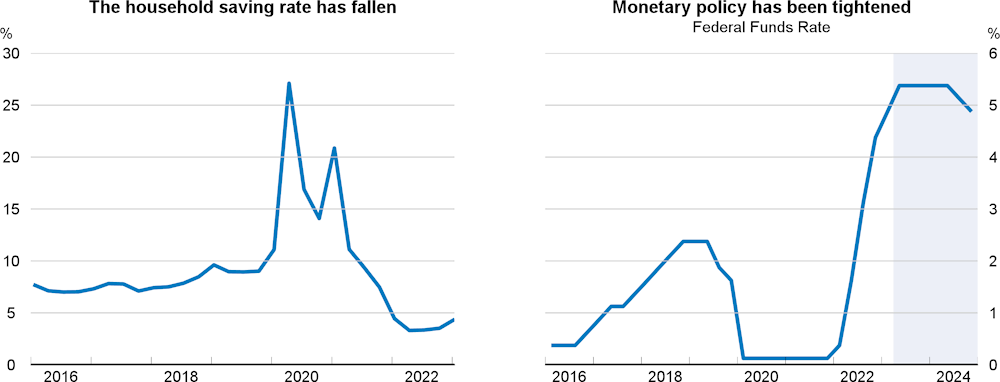Real GDP is projected to grow by 1.6% in 2023 and 1.0% in 2024. Growth in private consumption and investment is expected to moderate in response to the tightening in monetary and financial conditions and as savings are further depleted. As demand slows, employment is expected to fall and the unemployment rate is projected to gradually rise towards 4½ per cent in 2024. With labour market tightness abating, wage growth is expected to moderate further, along with inflationary pressures. Nonetheless, the economic outlook could worsen if rising interest rates expose further financial fragilities. On the upside, faster-than-anticipated disinflation could allow an earlier easing of monetary policy that supports economic growth.
The lagged impact of monetary policy tightening along with a further increase in the federal funds rate will weigh on economic growth. Temporary fiscal support introduced during the pandemic has now unwound and the stock of household savings accumulated through the pandemic is being rapidly drawn down. Labour force participation of women would benefit from improving access to childcare through increased public funding. At the same time, the quality of childcare could be improved by establishing minimum federal standards for care provision and a quality rating system for childcare centres that is harmonised across states.



